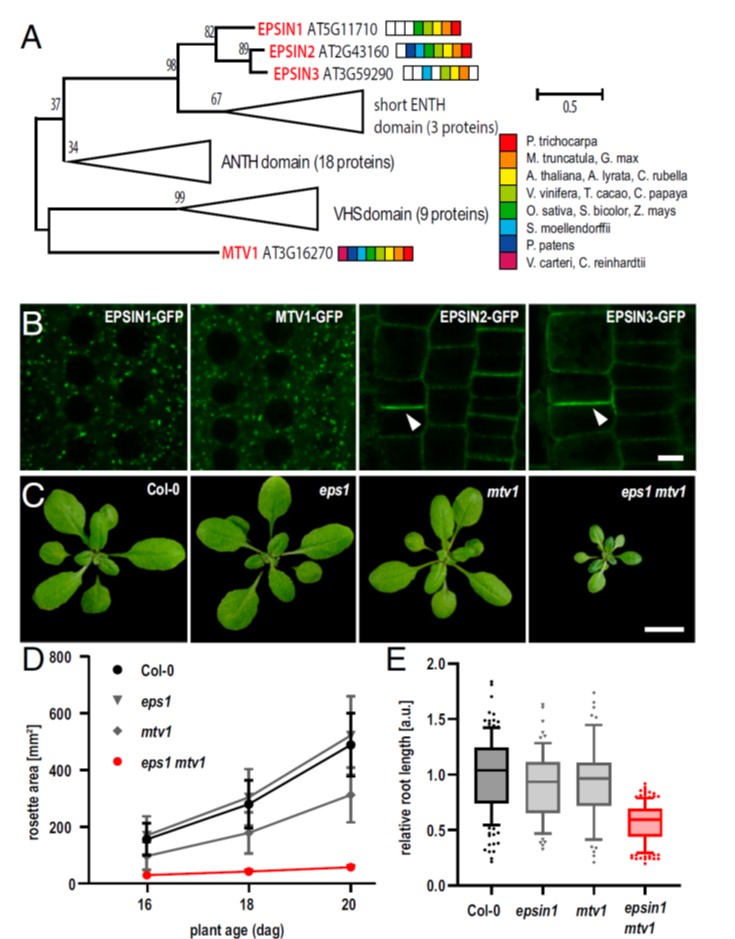
Functionally overlapping but molecularly distinct TGN subdomains of two Epsin-like proteins (PNAS)
Plant Science Research WeeklyThe trans-Golgi networks (TGN) is a major protein sorting station involved in trafficking or recycling of endosomal materials. This busiest hub in the cell has at least four important pathways including the anterograde routes of secretory, recycling, vacuolar transport and retrograde endocytic pathways.…
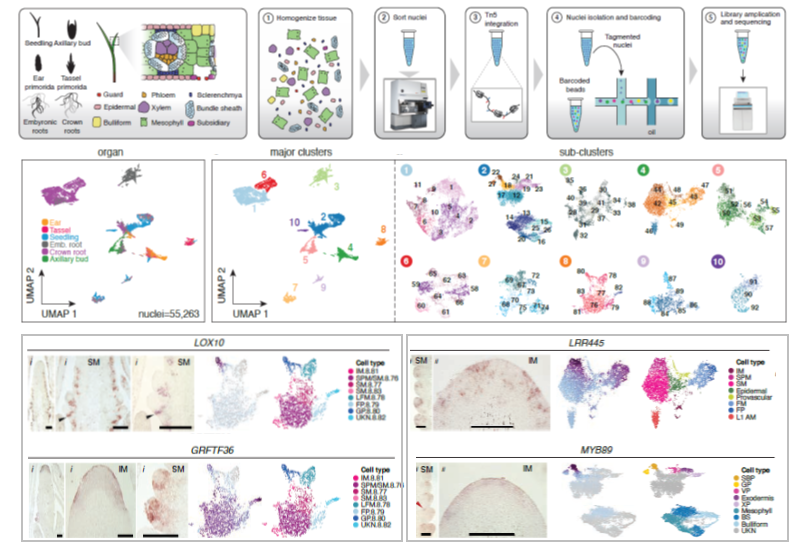
A cis-regulatory atlas in maize at single-cell resolution (bioRxiv)
Plant Science Research Weekly
Cis-regulatory elements (CREs) are DNA sequences found near or within genic regions that drive proper gene expression in time and space. Thus, CREs play essential roles in the diversification of spatially distinct cell-types with specialized function in multicellular organisms. To identify CREs underlying…
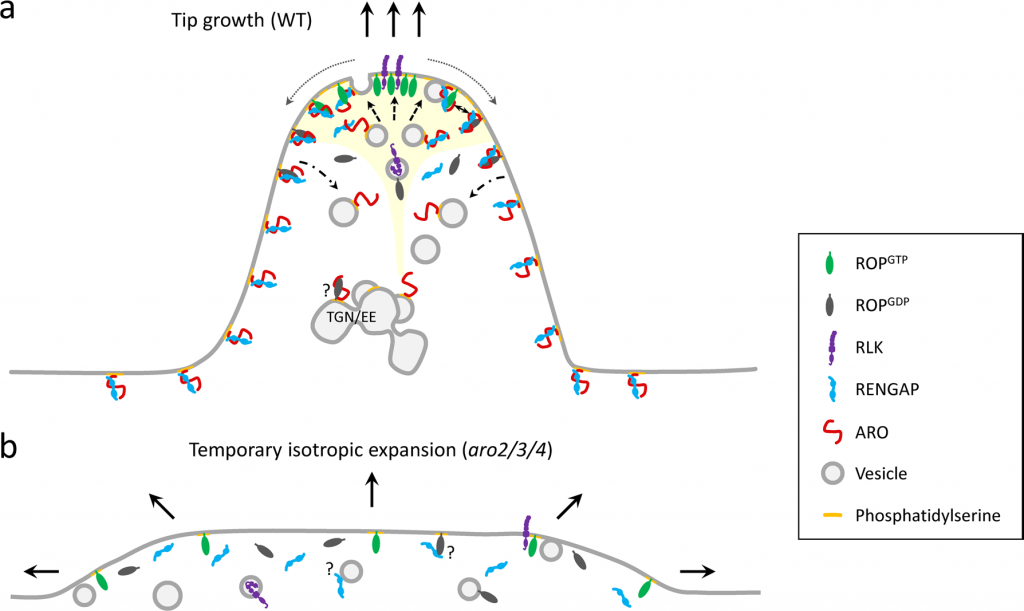
Go polar: Regulation of Rho GTPases by ARO proteins (Nature Plants)
Plant Science Research WeeklyPolar cell growth is a key feature in plant organs like root hairs, trichomes and pollen tubes. Kulich and co-workers have identified novel regulatory elements governing the polar growth of root hairs and trichomes in Arabidopsis thaliana. Studying a group of proteins named ARMADILLO REPEAT ONLY (ARO),…
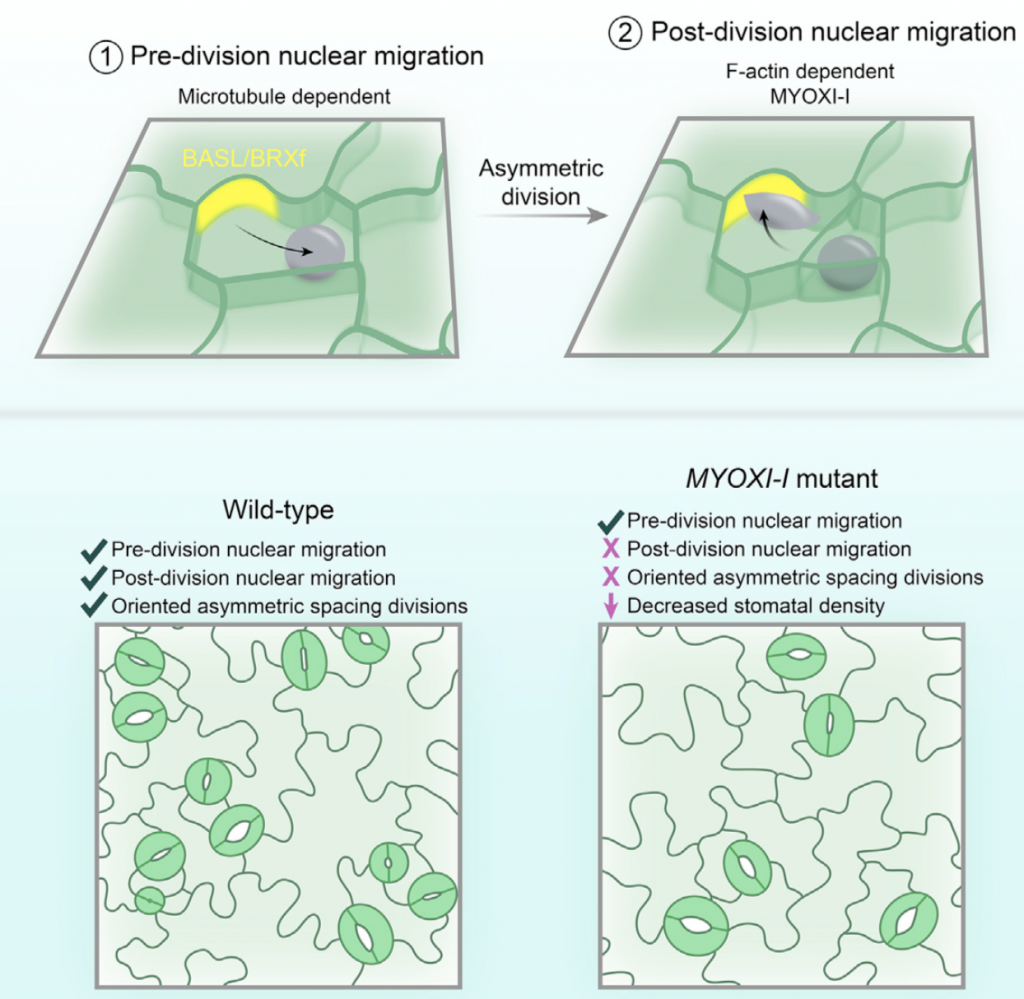
Opposing, polarity-driven nuclear migrations underpin asymmetric divisions in stomatal patterning (Curr. Biol.)
Plant Science Research WeeklyAsymmetric cell divisions (ACDs) are often used by organisms to generate different cell sizes, each adopting a different cell fate. In plants, stomatal development provides an example of an ACD-derived patterning mechanism. Several proteins are known to be implicated in ACDs, like BREAKING OF ASYMMETRY…
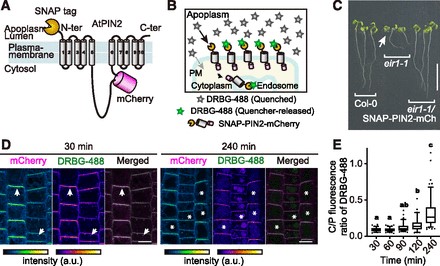
SNAP ‘n’ Track: Protein localization using fluorescent dyes (Plant Cell)
Plant Science Research WeeklyProteins’ sub-cellular localizations provide a wealth of information regarding their functional attributes. Protein localization in plant cells is usually done through genetically combining fluorescent proteins to the protein-of-interest. Now, Iwatate and colleagues report the successful localization…
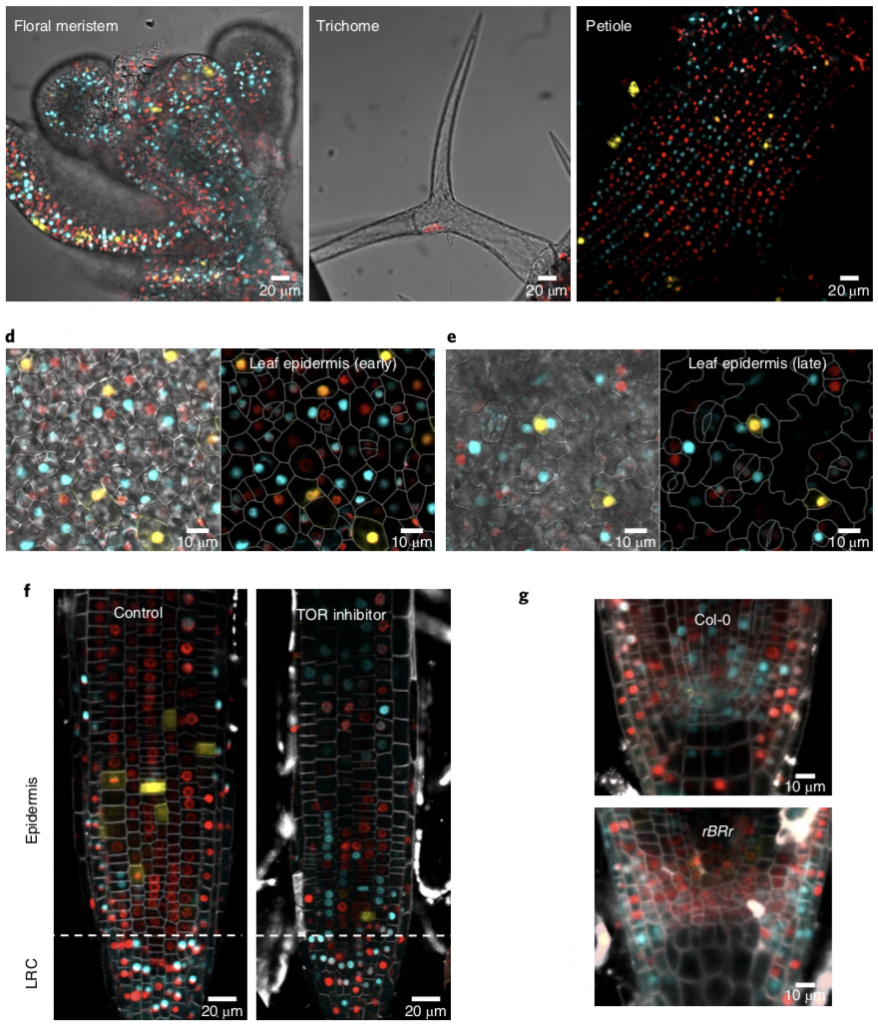
PlaCCI (Plant cell cycle indicator); fluorescent sensor for spatiotemporal cell cycle analysis (Nature Plants)
Plant Science Research WeeklyThe cell cycle requires a series of transitions from G1 to S, S to G2, G2 to M and M to G1 phases. Determining the cell cycle phase is critical for understanding the molecular events specific to a given stage of cell cycle. However, markers for identifying these cell cycle transitions in plants are not…
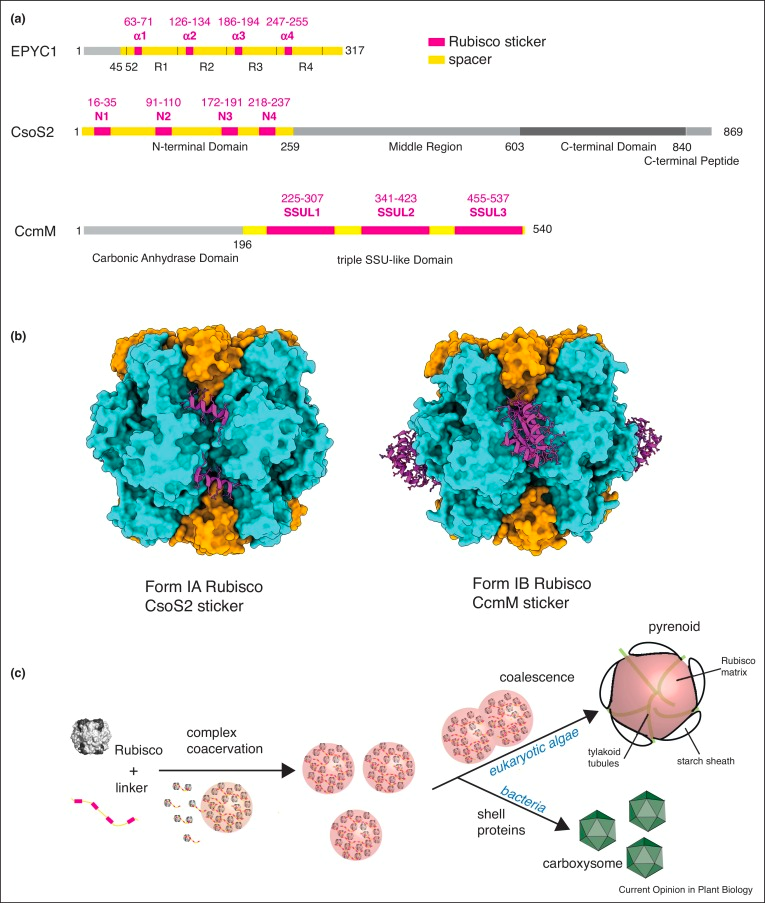
Review: Biomolecular condensates in photosynthesis and metabolism ($) (Curr. Opin. Plant Biol.)
Plant Science Research WeeklyBiomolecular condensates are membraneless organelles with the capacity to spatially concentrate biomolecules. Liquid-liquid phase separation (LLPS) is one mechanism of condensate formation in which demixing of macromolecules leads to separation into dense and light phases. Photosynthetic organisms like…
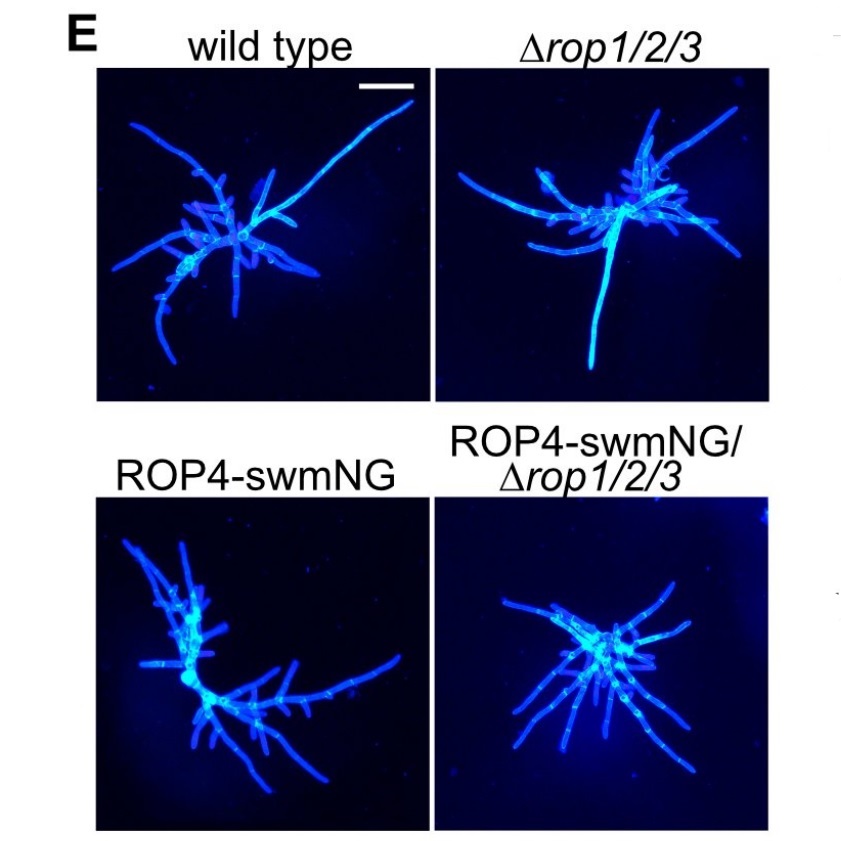
Roles for this ROP GTPase in subcellular and tissue-level patterning (Plant Cell)
Plant Science Research WeeklyRho-of-plants (ROP) proteins are master regulators of cell polarity within plants and influence cell wall deposition, tissue development, and several signaling processes. However, they are quite difficult to study: attempts to form a fluorescent ROP fusion protein have proven elusive, and there are multiple…
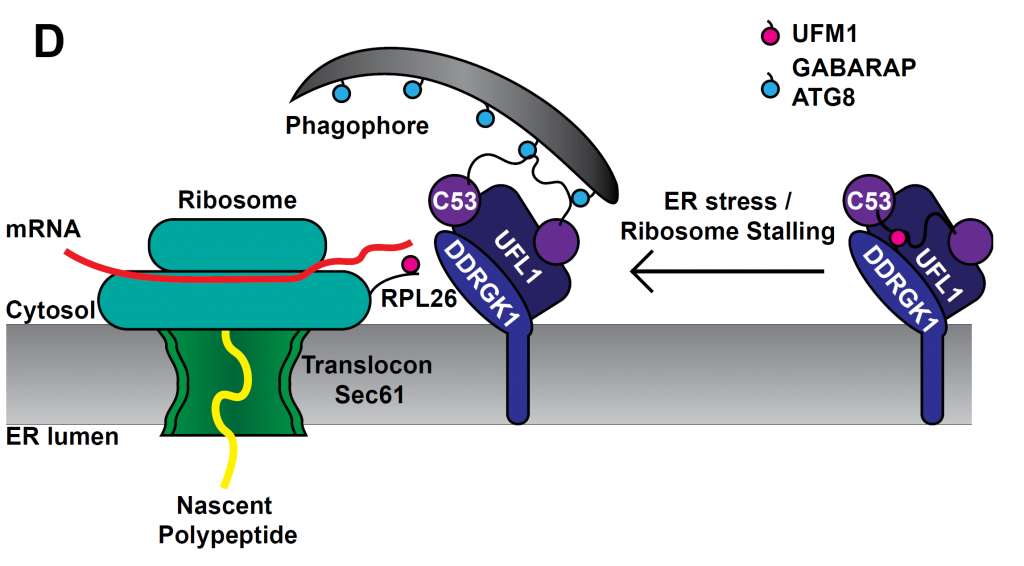
A cross-kingdom conserved ER-phagy receptor maintains ER homeostasis during stress (eLIFE)
Plant Science Research WeeklyQuality control of the protein folding mechanism in the endoplasmic reticulum (ER), which selectively eliminates or recycles unwanted cytoplasmic components, is recognized by specific autophagy receptors. Selective removal of certain ER domains by the autophagy pathway (termed as ER-phagy) is controlled…

